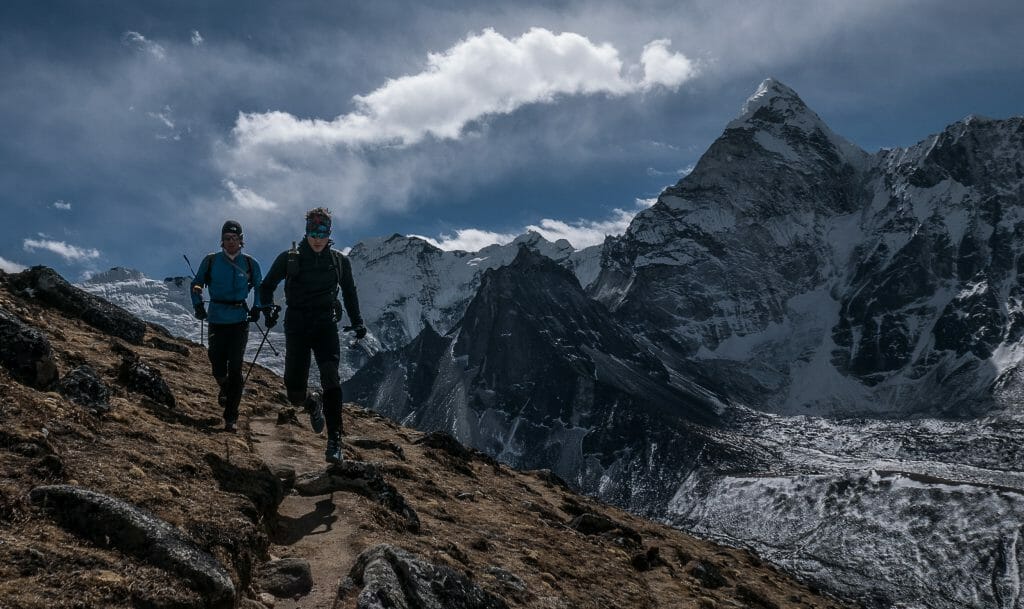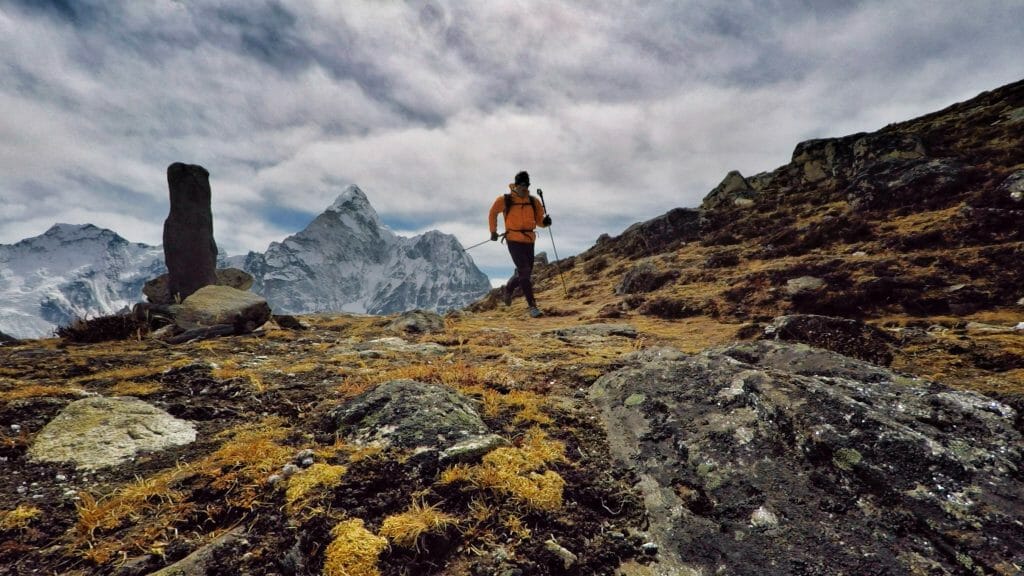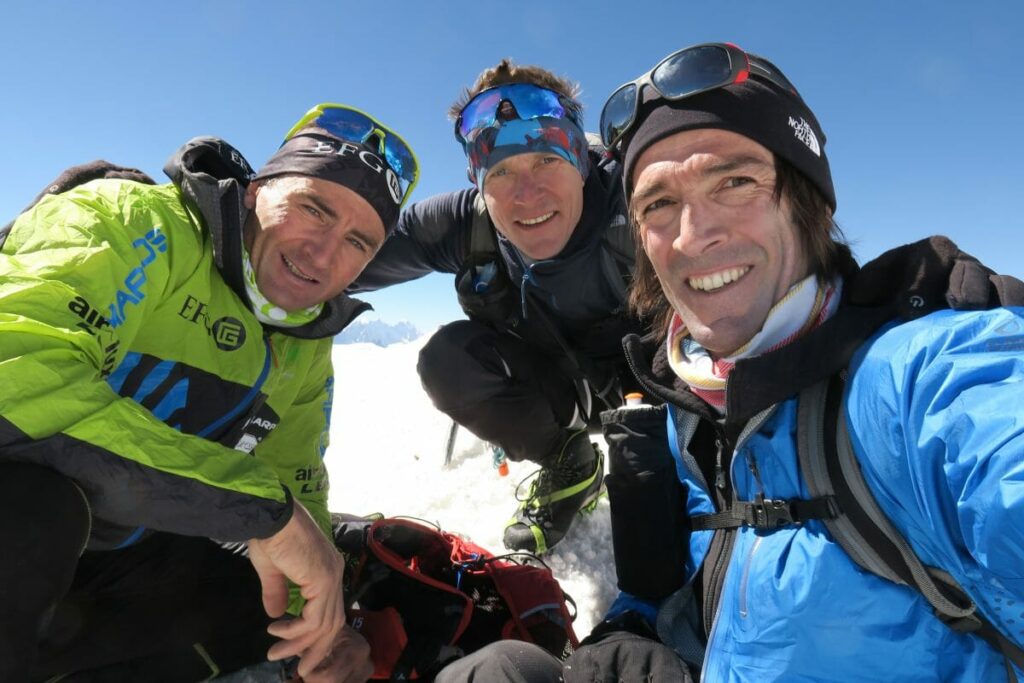At the risk of sounding like a broken record, Steve and I continue to beat the drum of low-intensity training for building endurance. Why are we so focused on it? Early in our careers, we connected some previously unconnected dots and had the proverbial aha moment that shaped our training philosophy. Over the past 15 years of ascents and achievements, both personally and with our clients, that philosophy has proven itself to work very well.
Yet we still run into alpine climbers and trainers on a daily basis who continue to use training methods more suited to sport climbers and 5,000-meter runners because they think high-intensity training is a shortcut to long-duration endurance.
What does climbing high mountains look like from a metabolic standpoint? And, more importantly, what are the implications for training? We were able to collect data for some of the best alpinists in the world while they trained up to 20,000 feet (6,100 meters), and we feel that sharing this information will help others understand the importance of building the basic aerobic capacity of our athletes.

To prepare for upcoming spring climbing objectives, alpinist and Uphill Athlete David Goetter, along with Hervé Barmasse and Ueli Steck, recently wrapped up a three-week training camp in the Khumbu region of Nepal. This training block is part of the overall annual training strategy for these guys, and they build their plans around it. It is an extension of a similar training period that David and Ueli used last year (2016) before their trip to Shishapangma.
David and Ueli both wore their heart rate monitors and uploaded the workouts so we could view them in near real time. One of the first things that we noticed was just how low their heart rates were during all their runs and climbs. The average and peak heart rates were much lower than when these guys are training at home in the Alps.

High-altitude training: David Goettler running trails near Kongma La (18,135 feet/5,525 meters)
Below is a screen shot of the workout data download where they climbed Island Peak. The red line represents David’s heart rate. The gray is the elevation gain (about 1,500 meters), and the horizontal scale is time in hours and minutes. David’s Aerobic Threshold (AeT) is about 155 bpm at sea level. His maximum heart rate on this workout was 133. They were climbing at a controlled aerobic effort similar to how they would feel at home: gaining 1,500 meters in 2 hours and 40 minutes. After 15 minutes on the summit, his resting heart rate dropped to only 95 bpm, 50 beats above his low-elevation resting heart rate (indicating that he was not well acclimated). This give him a very small effective working range. So, he better have a good low-end work capacity because the top end doesn’t exist.

Heart rate data (in red on left scale) for David Goettler from February 18 climb of Island Peak, 20,275 feet/6,180 meters. Ueli’s heart rate chart would look the same.
Physiological Mechanisms and Implications
There are several prevailing theories as to why this occurs:
- At high elevations (and the higher the elevation, the more pronounced the effect), the barometric pressure and thus the partial pressure of oxygen (PO2) of the atmosphere drops. Therefore, each breath contains fewer molecules of oxygen than it does at lower altitude (which has a higher barometric pressure). If you’ve been to even moderately high elevations like 14,000 feet you have no doubt noticed that your work rate/speed is greatly reduced. There just isn’t enough O2 to power sustained vigorous work. One of the upshots of this is that a well-trained heart has much more pumping capacity than is needed at these high elevations. In fact, studies have shown that on the summit of Mount Everest, even if we had an unlimited cardiac output, our maximal work rate would remain unchanged due to the huge drop in oxygen content of the blood. The heart is a slave to the brain, which gets feedback from the muscles as to how much O2 is needed to sustain the work required. When the PO2 drops, the muscle power output necessarily drops with it and so the heart, in response to the lower power demands, cuts the cardiac output by lowering the heart rate.
- Additionally, the brain may select to prioritize the cardiac muscle over skeletal muscle for O2 delivery. If there is not enough O2 to support a higher cardiac output, then the brain will limit the heart rate to ensure that the heart’s O2 demand does not outstrip its supply. Couple this lower cardiac output with the lower PO2 and you’ve got skeletal muscles that simply don’t have enough oxygen to sustain high-intensity exercise.
- Due to the very high rate of ventilation (breaths per step) required at these very high elevations, a great deal of blood will be shunted to the respiratory muscles. This too will leave less for the skeletal muscles.
Taken together, all three stack the deck against those leg muscles being able to get enough blood/O2 to power high-intensity movement.
Training Implications
So here is the take-home point: With heart rates so limited, even these very well-trained athletes cannot operate at high intensities. They never even see heart rate Zone 2 or 3 let alone Zone 4 intensities. They just can’t access the higher-power muscle fibers that are trained with high-intensity (high-heart-rate) workouts and consume primarily glycogen for fuel. They are restricted to their humble slow twitch fibers, which rely almost exclusively on fat for fuel. Their base aerobic capacity (measured by the Aerobic Threshold) had better be as high as possible because that is really the only metabolic engine they can use at these high altitudes.
This really drives home the importance of low-intensity aerobic base training for these types of athletes. Hours upon hours, month after month, for years upon years of appropriate training is required to maximize this quality. This long-term chronic endurance training increases the dense network of capillaries in the skeletal muscle, where the oxygen transfer into the muscle occurs. NO amount of high-intensity training can provide the needed metabolic or structural adaptations for optimal performance at altitude. In the wrong dose, the high-intensity training that is often prescribed as training for alpinists and mountaineers can be detrimental to aerobic development. Nevertheless, we frequently see this misguided and ill-informed prescription used.
No amount of high-intensity training can provide the needed metabolic or structural adaptations for optimal performance at altitude.
Performance Note
These alpinists cut 30 minutes off last year’s identical climb of Island Peak and felt much less fatigued when they got back to their lodge in Chukung. This represents a performance gain of over 8 percent for already very well-trained athletes in about eight months. We have seen gains of over 30 percent in similar tests by less well-trained athletes we’ve coached.
This article was originally published by David Goettler.
Special thanks to Dr. Monica Piris, MD, and Dr. Scott Ferguson, PhD, for their help with this article.
Further reading
David repeated this training camp again in 2018. Watch the video!

